Provide The Most Complete Packaging Solution For Your Project.
The main material of BOPP (biaxially oriented polypropylene) woven bags is polypropylene (PP). It is made by extruding and stretching polypropylene resin into flat yarns and then weaving them. Polypropylene has the advantages of light weight, high strength, and chemical corrosion resistance, and is suitable for making various types of packaging woven bags.
There are many types of non-woven bag materials, and the most common ones are polypropylene (PP), polyester (PET), etc. Non-woven fabrics made of polypropylene are also called polypropylene non-woven fabrics, which are made by meltblowing or spunbonding. Polyester non-woven fabrics are made of polyester chips. These materials make non-woven bags soft, breathable, and moisture-proof.
Woven cloth is generally woven from flat yarns, and the common raw materials are polypropylene or polyethylene. The raw materials are first made into a film, then cut into narrow strips and stretched into flat yarns, and woven cloth is formed by warp and weft weaving. It has good strength and wear resistance and is often used in packaging, geotechnical and other fields.
Non-woven fabric is a fabric that does not require spinning and weaving. The fibers are combined with each other by mechanical, thermal bonding or chemical methods. According to the different web forming and reinforcement methods, non-woven fabrics can be divided into spunbond non-woven fabrics, meltblown non-woven fabrics, needle-punched non-woven fabrics, etc. It has the characteristics of short process flow, high output, low cost and wide application.
Polypropylene material: From an environmental protection perspective, polypropylene itself has high chemical stability and a long natural degradation time, but it can be recycled and reused, and can be reprocessed into plastic products after recycling.
Polyester material: Polyester non-woven fabrics can also be recycled, depolymerized or re-granulated by chemical or physical methods, and used to produce new polyester products. Some new non-woven fabrics are made of degradable materials and can degrade quickly under certain conditions.
The inner bag has developed a starch-based biodegradable version (in accordance with GB/T 38082 standard), and the outer bag is still made of traditional PP material.
Rest assured as you place your order - your satisfaction is our utmost priority.
25+
Years of experience
800+
28+
90+
XIFA currently uses gravure printing.
Reverse gravure printing is a special gravure printing process, for example, it is different from traditional gravure printing in terms of printing direction and ink transfer method, but the specific process definition needs to be combined with the specific manufacturer. Generally, it may refer to the situation of ink transfer printing from the opposite direction of the conventional direction.
Use a flexible printing plate to transfer ink through anilox roller for printing. Flexographic plates are usually made of rubber or photosensitive resin, with low printing pressure and strong adaptability to substrates. They are often used for packaging printing and can print various materials such as paper, plastic film, composite materials, etc., with fast printing speed and low cost.
Support brand logo customization, we have a professional design team.
We provide free packaging design.
In gravure printing plate making, electric engraving is a plate making method. Through the electronic engraving machine, the digital image signal is converted into an electrical signal, and the engraving head is controlled to engrave on the surface of the copper drum to form pits of different depths. These pits are the parts that hold ink during printing, thereby realizing the reproduction of the image.
Refers to the printing cylinder. In gravure printing, the surface of the printing cylinder is engraved to form the image and text. In offset printing, there are printing cylinders, rubber cylinders, impression cylinders, etc., which work together to achieve ink transfer and printing. The accuracy and surface quality of the cylinder have an important impact on the printing quality.
We provide one-stop solutions, from design to production to delivery, following your needs throughout the process. Purchasing and sales services can also be provided. The product range includes packaging machinery, equipment, raw materials, etc., and the service scope is wider and more professional.
Understanding that every customer’s needs are unique, we offer customizable design options to meet your specific requirements and specifications.
Our efficient warehouse inventory management system brings numerous advantages to our customers. Finished or semi-finished products can be securely stored in our factory, ready to be shipped precisely when needed.
Xifa leads with innovation: Each product features a QR code for seamless process tracing, ensuring quality and reliability at every step.
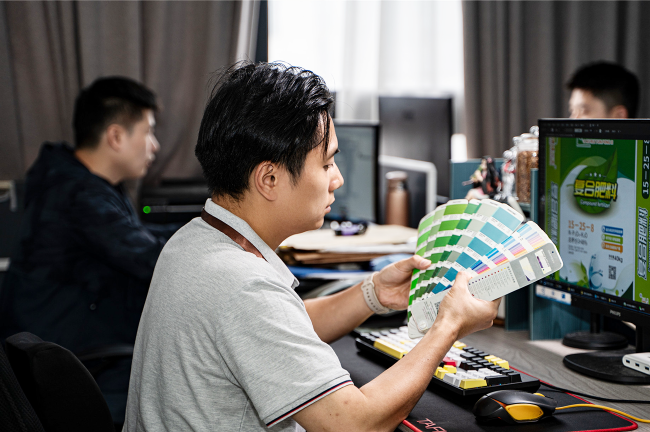
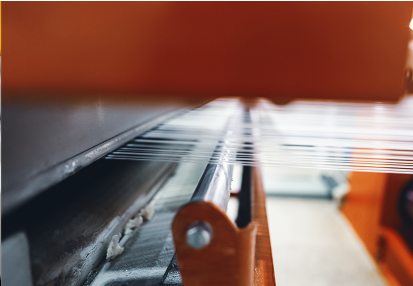
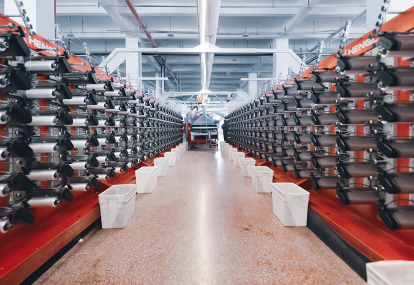
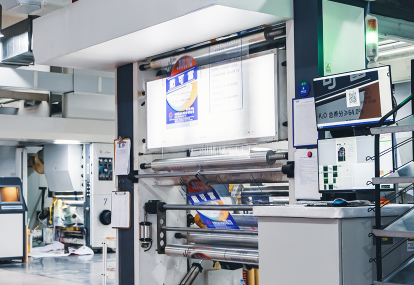
It is a composite process that melts and extrudes plastic raw materials through an extruder, and the extruded melt film is laminated with other substrates (such as paper, plastic film, etc.) under pressure to form a composite material. This method has high production efficiency and good composite strength, and is often used for packaging material lamination.
Use adhesives to bond two or more substrates together to form a composite material. First, apply glue on the surface of one substrate, and then laminate it with another substrate. The glue is used to bond through processes such as drying and curing. Glue lamination has a wide adaptability to substrates, but attention should be paid to the selection of glue to ensure the bonding effect and environmental protection requirements.
Lamination (such as glossy film and matte film, which increase gloss or matte effect, protect printed patterns and improve wear resistance), hot stamping (printing metallic glossy patterns and text on the surface of the bag), UV glazing (applying UV varnish on the printed surface, curing by ultraviolet radiation, and improving surface hardness and gloss), etc.
Drilling small holes in the bag may be for ventilation, weight reduction, and easy tearing. For example, punching holes in food packaging bags can adjust the humidity and gas exchange in the bag to prevent food from spoiling; some easy-tear bags can be punched to make it easier for consumers to tear open the package.
The transparent part set on the bag allows you to directly see the product in the bag. It is convenient for consumers to view the product and improve the product display effect.
According to the material, there are plastic film windows (such as PVC, PE and other films), cellophane windows, etc.; according to the shape, there are square, round, special-shaped windows.
Common ones include plastic handles (injection molding, sturdy and durable), paper rope handles (environmentally friendly, comfortable to touch), non-woven fabric handles (uniform with the bag material, beautiful), webbing handles (high strength), etc.
Plastic handles are generally fixed to the bag by injection molding or hot pressing; paper rope handles can be fixed by punching, stringing, knotting or gluing; non-woven fabric handles and webbing handles are usually installed on the bag by sewing or gluing.
The high-frequency vibration of ultrasound is used to make the plastic molecules at the bag seal rub against each other to generate heat, so that the plastic melts and bonds together to form a sealing effect. This method has fast sealing speed, good sealing, and no pollution.
The material is curled inward and sewn or heat-sealed at the top edge of the bag to increase the edge strength of the bag, prevent edge wear, and make the bag look more beautiful. It can also be used to install handles, etc.
Refers to easy-opening design, which is convenient for consumers to open the bag. Common forms include easy-tear openings (such as serrated cuts on the edge of the bag), pull rings, etc., which reduce the difficulty for consumers to open the package.
Drawstrings are generally a pullable strap set on the bag, which is used to tear the bag or assist in opening the package. It is an auxiliary tool similar to the easy-tear opening to increase the convenience of opening.
It may be spelled incorrectly. It is speculated that it may be “Crip-Cut Tape”, which is a tape with special cutting or opening functions, such as easy-tear textures, etc., which is convenient for opening the package.
It can be provided. At present, except for zipper seals, our factory can meet the production needs.
There are many ways to fix the lining, such as gluing (sticking the lining to the inner wall of the bag with food-grade glue), heat sealing (melting the lining to the inner wall of the bag through hot pressing), sewing (sewing with sewing thread for some thick material linings), etc., to ensure that the lining is stable in the bag and does not affect product packaging and use.
There are industrial bags such as anti-skid and anti-static. Anti-skid bags are achieved by adding an anti-skid coating on the surface or changing the surface texture; anti-static bags are generally made of anti-static materials (such as plastics with anti-static agents added) to prevent damage to electronic products due to static electricity accumulation.
Woven bags and non-woven bags are suitable for multiple industries, such as agriculture (fertilizer, seed packaging), industry (chemical raw materials, building materials packaging), food industry (rice, flour, etc. packaging), retail industry (shopping bags), clothing industry (clothing packaging bags), etc.
Some specially designed and processed bags can be used for liquid or hot filling. For example, some composite bags with good barrier properties and thermal stability can be used for hot filling food; for liquid packaging, the bags must have good sealing and liquid corrosion resistance, such as special lining or composite structure.
The load-bearing capacity of our products varies according to different application scenarios. For example, the rice bag is between 5KG and 30KG. The actual load-bearing capacity can reach up to 50KG.
At present, the smallest PP material has been made is 18.5cm*60cm, and the largest can be about 90*120. It basically depends on the width. The length can be cut at will.
Yes (can be achieved by using QR code technology, through dark label, clear code and dark code, invisible code, rainbow code, chip code, etc.)
Good product quality (high strength, good moisture resistance, to ensure that cement is not damaged or absorbs moisture during storage and transportation), reasonable cost (can provide cost-effective products, reduce the packaging cost of cement production enterprises), strong production capacity (meet the packaging needs of large-scale cement production), considerate service (provide customization, timely delivery and other services), etc.
Yes, XIFA currently involves a wide range of cooperative customers, such as: food, chemical, building materials, etc. We will select suitable packaging bags for you according to different cooperation cases.







4000 plain printed bags, 5000 color printed bags, 500 container bags, 5000 paper and plastic bags, etc.
We provide free samples, and the delivery cycle is subject to the actual mailing method.
Acceptable. Our company’s equipment has high production capacity, and we can set up a special team for your urgent orders and give priority to production.
For example, urgent orders for small packaging bags can be delivered within 4-6 days. Please inquire for specific details.
We support land, sea and air transportation. Each market has a long-term cooperative logistics company with a complete supply chain.
You can consult our sales staff. XIFA has offices in many cities in China, with a professional sales team and perfect service.
Pricing is based on material, weight, transportation method, and tax. The specific quotation will be based on the sample bag or standard provided
Our packaging bag products are aimed at multiple markets around the world. We have export experience in countries such as the Dominican Republic, Dubai, and Yemen, and we have complete export qualifications.
We support OEM/ODM orders and have extensive experience in the Chinese market.
We support T/T, our payment mode: 30% deposit, balance before shipment.
Whether you're looking for customized PP bags, BOPP bags, or heavy-duty ton bags, we’re here to help. Fill out the form below and our XIFA team will get back to you within 1 business day.



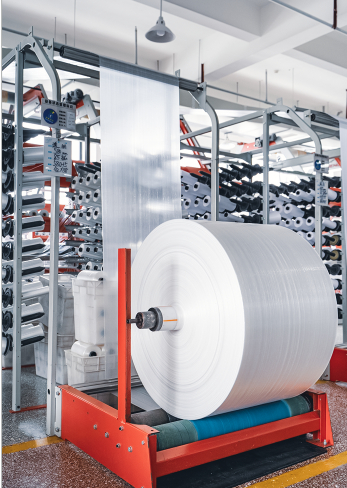

WhatsApp us
